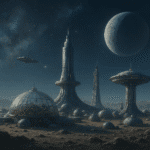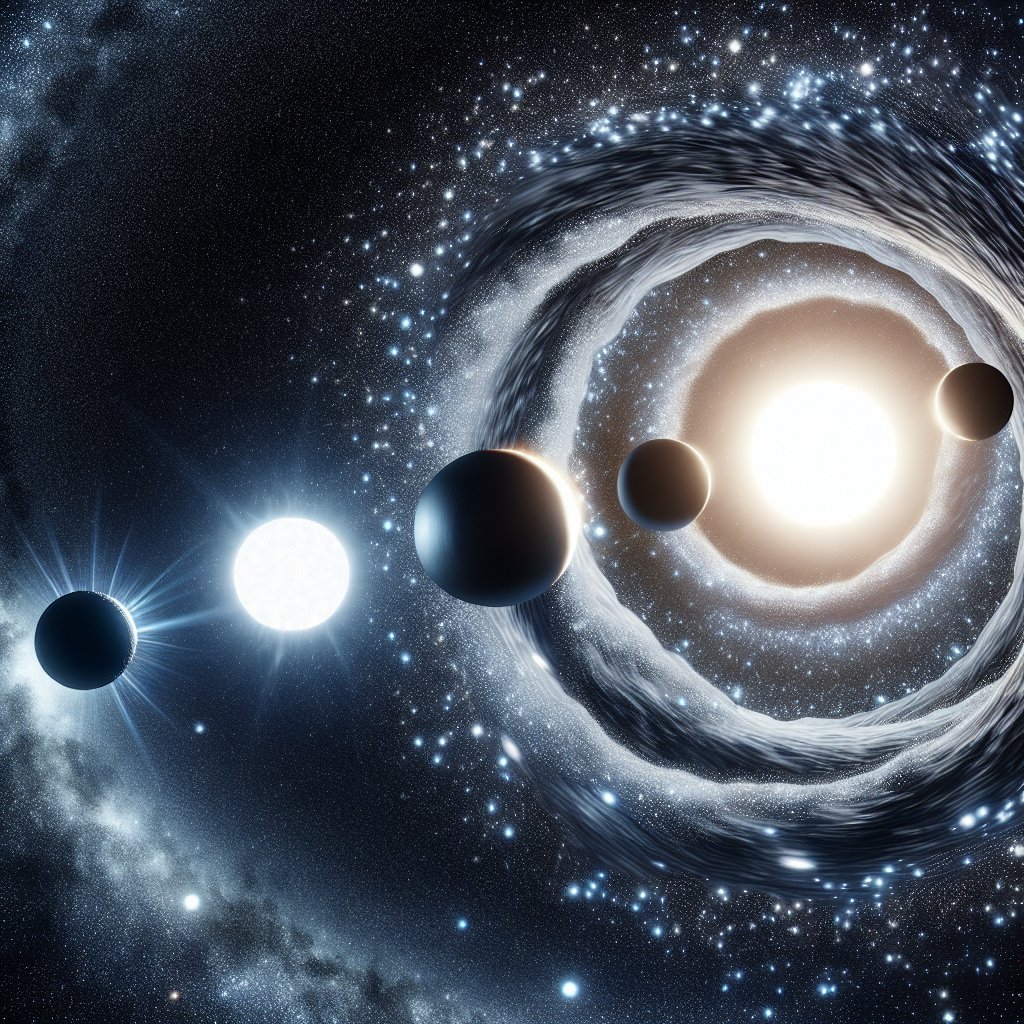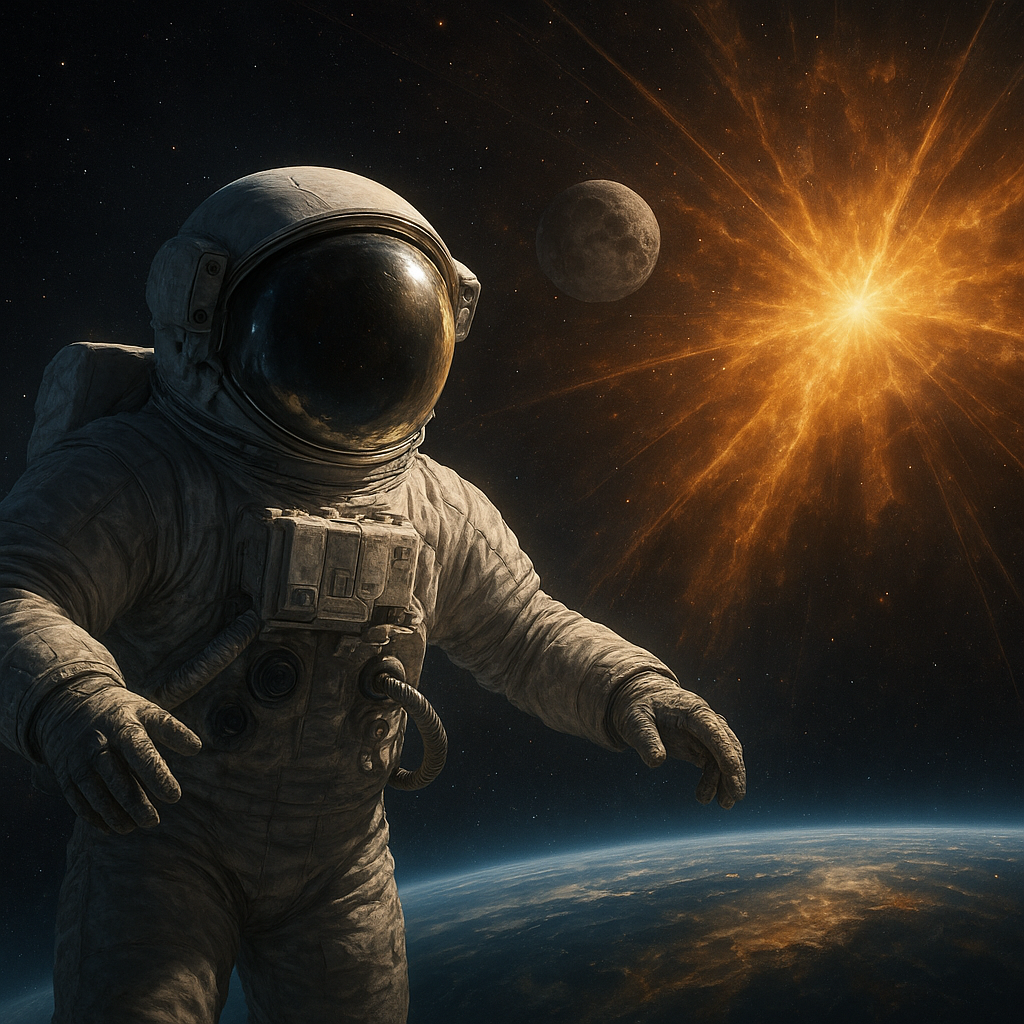The lifecycle of stars is a fascinating journey that spans billions of years, transforming simple hydrogen atoms into some of the most enigmatic objects in the universe, such as neutron stars and black holes. This article delves into the complex processes that govern the birth, evolution, and ultimate fate of stars, shedding light on the cosmic phenomena that have intrigued astronomers for centuries.
The Birth and Evolution of Stars
Stars are born in vast clouds of gas and dust known as nebulae. These stellar nurseries are the cradles of star formation, where gravity pulls together the material to form dense regions called protostars. As the protostar accumulates more mass, its core temperature rises, eventually reaching the point where nuclear fusion ignites. This marks the birth of a new star, which enters the main sequence phase of its lifecycle.
During the main sequence phase, a star fuses hydrogen into helium in its core, releasing energy that counteracts the force of gravity. This balance allows the star to maintain a stable size and luminosity for millions to billions of years, depending on its mass. Massive stars burn through their fuel much faster than smaller ones, leading to a shorter main sequence lifespan.
As a star exhausts its hydrogen fuel, it undergoes significant changes. For stars like our Sun, the core contracts and heats up, causing the outer layers to expand and cool. This transformation turns the star into a red giant. In this phase, helium fusion begins in the core, producing heavier elements like carbon and oxygen.
The Death of Stars: Neutron Stars and Black Holes
The fate of a star after the red giant phase depends largely on its initial mass. For stars with masses up to about eight times that of the Sun, the outer layers are eventually expelled, forming a planetary nebula, while the core becomes a white dwarf. However, for more massive stars, the end of the red giant phase leads to more dramatic outcomes.
When a massive star exhausts its nuclear fuel, its core collapses under gravity, triggering a supernova explosion. This cataclysmic event disperses the star’s outer layers into space, leaving behind a dense core. If the core’s mass is between about 1.4 and 3 times that of the Sun, it becomes a neutron star. Neutron stars are incredibly dense, with a teaspoon of their material weighing billions of tons. They are composed almost entirely of neutrons and exhibit strong magnetic fields and rapid rotation, often observed as pulsars.
If the core’s mass exceeds about three solar masses, the gravitational collapse continues, forming a black hole. Black holes are regions of spacetime where gravity is so strong that nothing, not even light, can escape. The boundary surrounding a black hole is known as the event horizon, beyond which information is lost to the outside universe. Black holes are among the most mysterious and intriguing objects in the cosmos, challenging our understanding of physics and the nature of reality.
The Role of Neutron Stars and Black Holes in the Universe
Neutron stars and black holes play crucial roles in the universe, influencing their surroundings in profound ways. Neutron stars, particularly pulsars, serve as cosmic lighthouses, emitting beams of radiation that sweep across the sky. These emissions provide valuable insights into the properties of matter under extreme conditions, helping scientists test theories of nuclear physics and general relativity.
Black holes, on the other hand, are key players in the dynamics of galaxies. Supermassive black holes, with masses millions to billions of times that of the Sun, reside at the centers of most galaxies, including our own Milky Way. They influence the formation and evolution of galaxies through their immense gravitational pull and energetic emissions, which can regulate star formation and drive galactic winds.
Moreover, the study of black holes has led to groundbreaking discoveries in astrophysics. The detection of gravitational waves, ripples in spacetime caused by the merger of black holes, has opened a new window for observing the universe. These observations provide direct evidence of black hole interactions and offer a unique way to test Einstein’s theory of general relativity.
Conclusion: The Cosmic Dance of Stars
The lifecycle of stars, from their formation in nebulae to their transformation into neutron stars and black holes, is a testament to the dynamic and ever-changing nature of the universe. These celestial objects not only illuminate the night sky but also drive the processes that shape galaxies and influence the evolution of the cosmos. As our understanding of stars and their remnants continues to grow, we gain deeper insights into the fundamental workings of the universe and our place within it.
In the grand tapestry of the cosmos, stars are the architects of complexity, forging the elements that make up planets, life, and everything we see around us. Their lifecycle is a story of creation, transformation, and renewal, a cosmic dance that has been unfolding for billions of years and will continue to do so for billions more.










